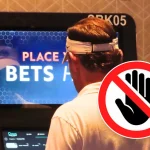Let’s be honest for a second. The siren song of a progressive jackpot is powerful. Watching that number tick up, up, up… it’s a digital Everest, promising a life-changing summit. But most people approach it with pure hope, a prayer, and a crossed finger.
What if you could tilt the odds, just a little? Not with magic, but with math. You see, while these games are fundamentally built on chance, a strategic framework can help you play smarter. It won’t guarantee a win—nothing can—but it can transform your approach from a hopeful gamble into a calculated risk.
The Unforgiving Math of the Jackpot
First, you have to understand the beast you’re dealing with. A progressive jackpot game, whether it’s a slot machine or a video poker variant, is designed with a built-in house edge. A tiny percentage of every bet feeds the growing jackpot. This is the core mechanic.
The odds of hitting the top prize are, to put it mildly, astronomical. We’re talking lottery-level odds. You’re more likely to be struck by lightning. Twice. But that doesn’t mean math is useless here. Its power lies not in defying the odds, but in managing your play around them.
Strategy #1: The “Theoretical” Break-Even Point
This is the big one. In gambling mathematics, there’s a concept known as the “jackpot trigger point.” It’s the point where the expected value of a bet theoretically becomes positive.
Here’s the deal: if a machine has a 1 in 10 million chance of hitting a jackpot, and the jackpot climbs to $11 million while the base bet is $1, the math might suggest a positive expectation. The key word is might. The calculation is brutally complex because it must account for the game’s entire paytable, the probability of smaller wins, and the jackpot’s specific seed and increment rates.
For us mere mortals, the practical takeaway is this: the higher the jackpot climbs relative to its usual reset value, the better the “theoretical” value. Don’t chase a jackpot that just reset. Wait for it to swell to a historically high level. It’s like waiting for fruit to ripen.
Strategy #2: Mastering Bet Sizing and Max Bets
This is non-negotiable. On virtually all progressive games, you must bet the maximum number of credits to be eligible for the jackpot. Betting less is, mathematically speaking, a terrible decision. You’re paying a premium (the extra credits) for a chance you’re not even buying.
Think of it like this: you’re buying a lottery ticket, but you only fill in half the numbers. You can’t win the big prize. So, if you can’t afford the max bet on a particular machine, find a cheaper one. Your bankroll will thank you, and you won’t be throwing money away on a ghost of a chance.
| Bet Type | Eligibility for Jackpot | Mathematical Implication |
| Minimum Bet | No | Paying for a chance you can’t win; highest house edge. |
| Partial Max Bet | No | Still ineligible; slightly less poor value. |
| Maximum Bet | Yes | Only way to have a mathematical shot; required for strategy. |
Strategy #3: Bankroll Management—Your True Best Bet
This is where most players fail. Progressives are bankroll assassins. The volatility is insane. You can burn through a month’s entertainment budget in an hour without a sniff of a decent win.
A simple, human-friendly rule? Decide your total progressive jackpot budget upfront. This is money you are 100% comfortable losing. Then, break it into sessions. Once that session’s cash is gone, you walk away. No exceptions. This discipline is the most powerful mathematical tool you have. It controls the only variable you truly can: you.
Why This Feels So Counterintuitive
Our brains are wired for stories, not statistics. We see a jackpot hit and think, “It’s due!” Or we play for hours and feel a “near-miss” means we’re getting closer. The machine is heating up, right?
Wrong. Each spin is an independent event. The math doesn’t have a memory. That near-miss was just a random combination designed to look like a near-miss. Understanding this—truly internalizing it—is a strategic advantage over 99% of other players.
Strategy #4: Game Selection and Paytable Analysis
Not all progressives are created equal. Seriously. Two machines with the same jackpot can have wildly different overall paybacks based on their lower-tier paytables.
If you’re playing progressive video poker, for instance, you need to learn the paytable. A “Full Pay” Deuces Wild game with a progressive is a much better bet than a short-pay version. The return on the non-jackpot hands is just higher. For slots, this is trickier, but generally, games with more frequent small wins (lower volatility) will let your bankroll last longer, giving you more shots at the big one.
The Psychological Equation
Here’s a thought. The most important variable in the “progressive jackpot equation” isn’t a number. It’s your mindset. The math gives you a framework, a cold, logical set of rules to operate within. But the thrill, the hope, the daydream—that’s the human fuel.
The real strategy is to let the math manage your money, so you can safely enjoy the dream. Because at the end of the day, that’s what you’re really buying—a ticket to a dream, with a vanishingly small, but mathematically-defined, chance of it coming true.
So play smart. Bet max. Watch the jackpot. Guard your bankroll like a dragon. And then, honestly, just enjoy the ride.











